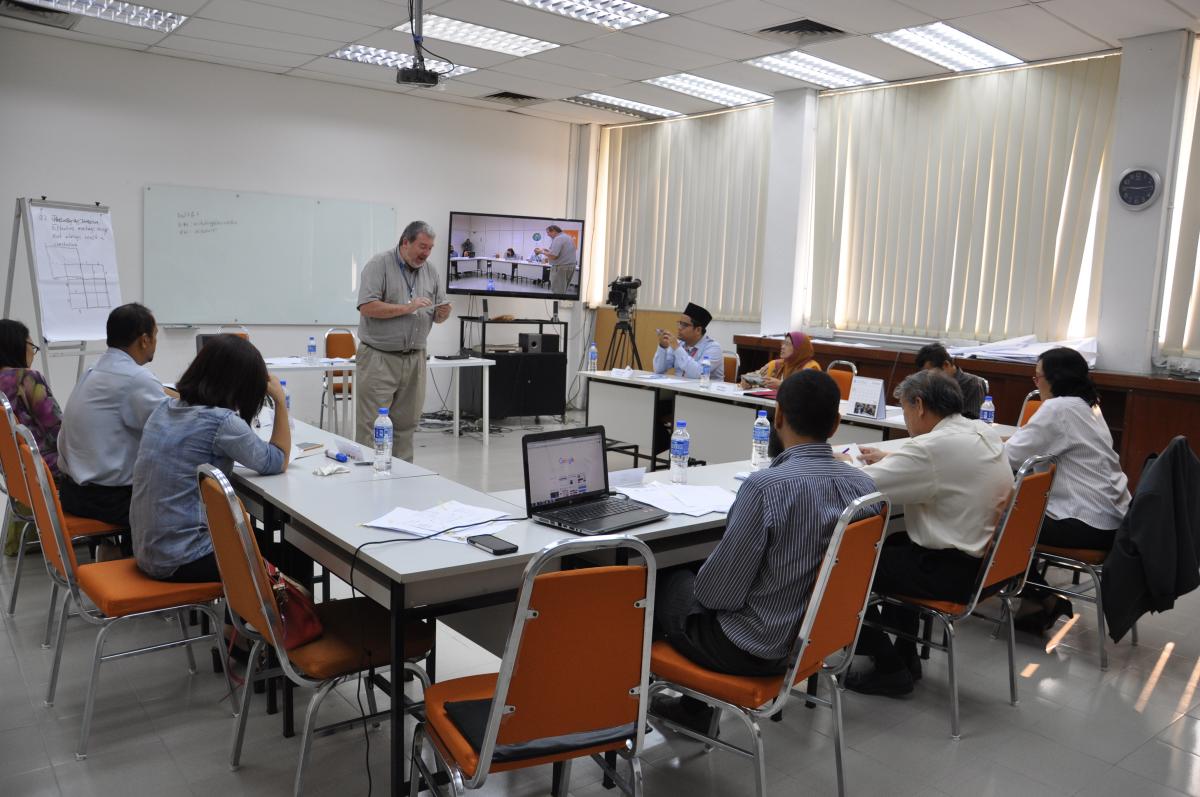We do our jobs every day and we know how to deal with in doing our jobs. But when David asked us to consider every participant as a center of a star and then out people/departments that we connect every day in daily jobs, draw arrows to show how we receive/give things to each other.
I realised how complicated our relations in workplace and how important to develop our ability in teamwork.
That will make stars shine and twinkle.
Mrs Sumonpan Kosonsiriset, Director, Institute of Public Relations, NBT, Thailand
The star exercise is good and fun to do. It gives us clear picture of doing our duties that involves with many people at different levels, and with different directions and approaches.
It makes us realise that everybody has roles to play and that we can’t leave out any one in a process of training management.
Ms Munira Murad, Head of Integrity, IPPTAR, Malaysia
Interesting, understand better our boundaries in communication within our organsiation.
AIBD/IPPTAR Regional workshop on Training of Trainers
AMS 2016 – Speakers & Bio
.tftable {font-size:12px;color:#000000;width:100%;border-width: 1px;border-color: #729ea5;border-collapse: collapse;} .tftable th {font-size:12px;background-color:#acc8cc;border-width: 1px;padding: 8px;border-style: solid;border-color: #729ea5;text-align:left;} .tftable tr {background-color:#ffffff;} .tftable td {font-size:12px;border-width: 1px;padding: 8px;border-style: solid;border-color: #729ea5;text-align:center; vertical-align:middle;} .tftable tr:hover {background-color:#ffffff;}
AIBD/PRD/ADPC/UNISDR In-Country Workshop on Climate Change and Disaster Risk Management
The In-Country Workshop on Climate Change and Disaster Risk Management was held in Bangkok from 30 to 31 March 2016. Our host and partner for this event was the Public Relations Department (PRD) of the Government of Thailand and the event was held at their headquarters. The Bangkok office of the Asian Disaster Preparedness Center (ADPC) and the United Nations Office for Disaster Risk Reduction (UNISDR) both provided resource persons to make this workshop possible. The workshop was attended by 28 producers, journalists and media officers from different departments in PRD.
Kind and Urgent Reminder AMS 2016
- AIBD is pleased to announce that the official venue of Asia Media Summit 2016 will be theSongdo Convensia (Convention) Center. The Convensia is located in Songdo IBD, Songdo International City, Incheon Free Economic Zone, Incheon.
- AMS 2016 Registration Deadline
The deadline for AMS 2016 registration is Friday, 15 April 2016 which is approaching fast. If you have not done this, please register online as soon as possible at the link here. We are asking for registration by the deadline for logistical purposes.
- AMS 2016 Hotels Registration Deadline
The official hotel for AMS 2016 delegates will be the Oakwood Premier Incheon Hotel, while the satellite hotel will be Orakai Songdo Park Hotel, both located at a close walking distance to the Songdo Convensia (Convention) Center.
Please note that self-funded bookings must be made directly with the respective hotel.
Discount rates for Oakwood Premier Incheon Hotelare available until midnight of Sunday, 17 April 2016 using the special promo code,which you will see after the online registration process is complete. From 18 April 2016 standard rates apply!!!
For full information on the room rates for both Oakwood Premier Incheon Hotel and Orakai Songdo Park Hotel, please register online at the link here.




